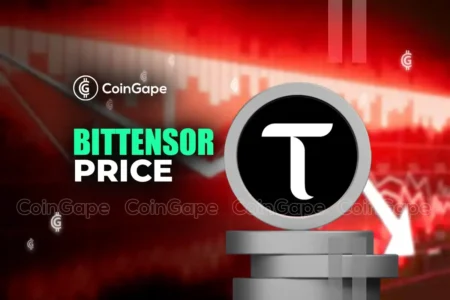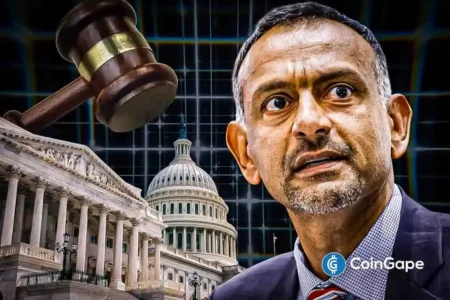Fed Rate Cut Debate: Waller’s Call vs. Powell’s Caution
As the U.S. economy navigates a complex landscape marked by fluctuating inflation and job market conditions, the Federal Reserve is caught in a delicate balancing act. Recently, Federal Reserve Governor Christopher Waller has advocated for an additional rate cut in December, arguing that prompt action is vital for sustaining the job market. In stark contrast, Fed Chair Jerome Powell insists that the cycle of monetary easing may have reached its limits, reflecting a division within the Federal Reserve regarding the best approach to take next.
Waller’s Argument for December Cuts
Governor Christopher Waller has expressed a sense of urgency regarding the Fed’s monetary strategy. In recent interviews, he highlighted the pressing need to protect the labor market, stating, "The biggest concern we have right now is the labor market." Waller points to improving inflation rates as evidence that a rate cut would be justifiable. His perspective is shaped by data indicating that inflation is cooling, with consumer prices increasing only 3% year-on-year for September—slightly below expectations.
Waller’s advocacy for a final rate cut by December aligns with his belief that swift action is essential. He argues that delaying the cut could jeopardize employment opportunities, especially as some segments of the labor market show signs of distress. By positioning himself as a champion of economic stimulus, Waller seeks to reinforce the notion that fiscal measures should adapt responsively to evolving economic indicators.
Powell’s Reservations
In stark contrast, Fed Chair Jerome Powell has taken a more cautious stance. Following the October FOMC meeting, Powell acknowledged that while inflation remains “somewhat elevated,” the overall economic landscape has not changed significantly enough to warrant another rate cut. Powell’s position reflects concerns that while inflation might be easing, external factors such as rising tariffs and input costs impose challenges on achieving stable prices.
Powell’s insistence on maintaining elevated rates is buttressed by the belief that a premature cut could re-ignite inflation pressures, complicating the Fed’s efforts to reach its 2% inflation target. His approach emphasizes the need for a thoughtful review of current economic metrics before making any further monetary policy adjustments. Acknowledging both the potential for positive change and the risks at play, Powell navigates a nuanced path aimed at safeguarding both price stability and job growth.
The Fed’s Internal Divide
The discourse surrounding potential rate cuts illuminates a broader division among Fed officials. While Waller advocates for a smooth transition to a more accommodating monetary policy, several other Fed leaders express a reluctance to make additional cuts at this time. Dallas Fed President Lorie Logan and Cleveland Fed President Beth Hammack have voiced reservations about reducing rates unless there is a more significant decline in inflation or a marked weakening in the job market.
This internal dissent reflects contrasting philosophies within the Fed regarding inflation management and economic stimulation. On one end are the dovish members like Waller, who prioritize immediate employment concerns, while other members advocate for a restrained approach to ensure inflation remains anchored, reflecting a cautious viewpoint.
Recent Economic Indicators
Recent data points further complicate the Fed’s decision-making landscape. The Bureau of Labor Statistics revealed that the consumer price index (CPI) increase for September was 3%, slightly below forecasts, offering some evidence that inflationary pressures may be dissipating. However, Powell’s caution underscores that economic stability hinges not only on inflation metrics but also on external forces, such as increased tariffs, which could place pressures on prices.
The potential for a rate cut has created a fervent anticipation in the financial markets, with traders pricing in approximately a 66% probability of a cut in December, as indicated by Polymarket data. Despite these expectations, Powell’s indication that further cuts are not guaranteed serves as a reminder of the complexities involved in U.S. economic policy and the unpredictability of market reactions.
The Importance of Communication
As the Federal Reserve navigates these murky waters, effective communication becomes paramount. Atlanta Fed President Raphael Bostic emphasized the importance of public understanding regarding the range of views within the committee. His remarks serve to transparentize the ongoing debate, highlighting the necessity for clarity as the Fed considers its next moves.
The divergence of opinions illustrates the complexity of modern economic policymaking; it is essential for both policymakers and the public to comprehend the broader implications of each decision. As the Fed grapples with competing priorities, effective communication can mitigate market volatility and foster a more informed public discourse.
Conclusion: A Critical juncture for Monetary Policy
As we approach the end of 2023, the Fed faces a crucial decision point regarding future monetary policy. Governor Waller’s call for another rate cut in December underscores the pressing need to balance labor market interests with inflationary pressures, a stance that has garnered differing opinions among fellow Fed officials. Chair Powell’s cautionary tone serves as a reminder that any policy decision must align with broader economic indicators, especially in the face of external challenges like tariffs.
Moving forward, it will be essential for the Fed to remain vigilant and responsive to evolving economic conditions. As the discourse continues, all eyes will remain on the Federal Reserve, as its next steps truly hold the potential to shape the U.S. economy in profound ways. This ongoing conversation highlights the complexities of monetary policy and the importance of a cohesive strategy aimed at fostering sustainable economic growth while safeguarding employment and price stability.
















